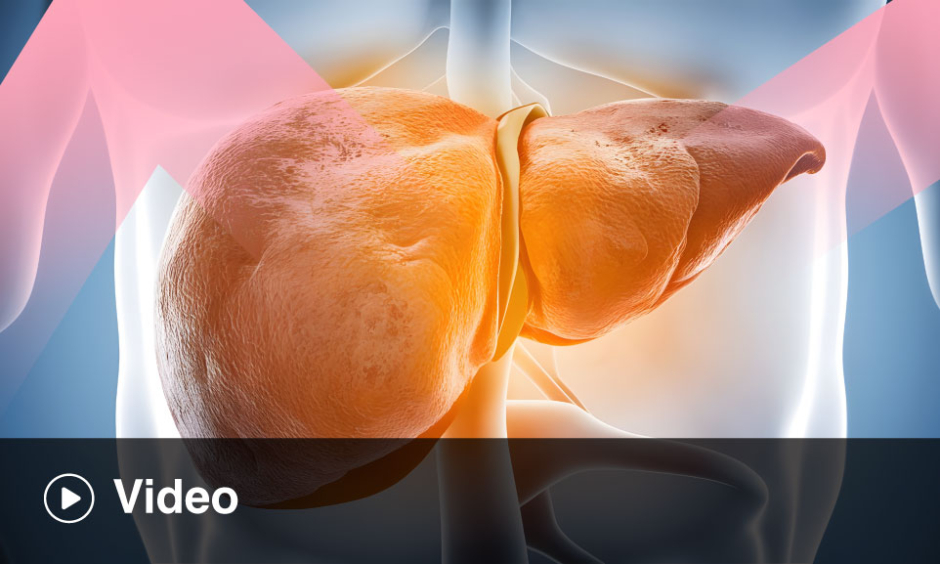This June, Milan, Italy, became more than the fashion capital of the world; from the 5th–8th June 2024, this historic city housed thousands of the brightest minds in the field of hepatology, coming together to present and discuss the latest developments, innovations, and insights into the future of liver care.
This year’s European Association for the Study of the Liver (EASL) International Congress featured symposia, roundtable discussions, abstract sessions, and many more presentations on all the hottest topics in hepatology today.
Talks surrounded the latest research in treating metabolic dysfunction-associated steatotic liver disease, as well as managing pruritus in primary biliary cholangitis, with insights from experts as well as patients. The Congress shed light on all of the most fascinating research in the world of liver disease today.
The excitement kicked off with an introduction from Aleksander Krag, EASL Secretary General, who welcomed the 7,578 delegates in attendance, before going on to emphasise the goals and importance of this annual congress. Krag highlighted the need for increased educational efforts in hepatology worldwide, and stressed the need for policy interventions and prevention strategies to address the non-communicable disease (NCD) burden in Europe. Emerging leaders and innovation in healthcare were also discussed, with a focus on continuous improvement and collaboration to improve treatments for patients everywhere. The need for stakeholders to come together to fight obesity was additionally addressed, with the aim of reducing exposure to risk factors, and therefore decreasing mortality and disability rates.
Krag’s rousing welcome was followed by a talk from Debbie Shawcross, King’s College Hospital, London, UK. Shawcross discussed the prevalence of steatotic liver disease (SLD), which affects over one-third of the global adult population, and introduced a global coalition for Healthy Livers, Healthy Lives, formed of various societies that focus on improving treatment and research in liver disease. Shawcross called for SLD to be integrated into the World Health Organization (WHO) NCD portfolio, “where it is not yet seen, but where it must belong,” she emphasised. It is SLD that accompanies all of the leading causes of NCD death, and therefore its importance cannot be ignored. Kremlin Wickramasinghe, WHO Regional Office for Europe, Copenhagen, Denmark, followed Shawcross’ plea for the inclusion of SLDs in the WHO portfolio with a deep dive into how cost-effective policies might be implemented to reduce NCDs in the WHO European Region. Jeffrey Lazarus, CUNY Graduate School of Public Health and Health Policy, New York, USA, then expanded on the Healthy Livers, Healthy Lives Global Coalition, which he explained was formed to address the low awareness of liver disease. This coalition, Lazarus explained, seeks to include liver disease on the United Nations agenda for 2025, and aims to work with WHO and the World Health Assembly to address liver health issues.
Increasing awareness and education in liver disease was a recurring topic throughout the introductory session; Vincenza Calvaruso, University of Palermo, Italy, and Francesco Russo, University Hospital Padua, Italy, were welcomed onto the stage to discuss ‘Love Your Liver’, a series of impact projects in London, UK. The mission of the project, they highlighted, is simply to create a better future for all Europeans when it comes to liver health. The programme encompasses several activities designed to raise awareness for liver health, promote prevention and early detection of liver diseases, and to support professional development for those in the field. Calvaruso and Russo laid out before the audience their plans to increase screening, hold interprofessional forums, and organise school visits in order to raise awareness. Last year, they proudly pointed out, EASL screened more than 400 people in Vienna, Austria, with the help of various other organisations. The hope, they emphasised, is to continue increasing these numbers, improving awareness and screening, for better health throughout the continent.
The opening ceremony continued on with awards presented by Krag and Shawcross, for the most influential and impressive emerging leaders in hepatology today. Each speaker, presenter, and award recipient expressed their excitement for the events to come in this year’s Congress, and expressed their hopes for the future of liver disease research. The end of this ceremony marked the true start of EASL 2024, a groundbreaking event which promises to continually improve education, advocacy, and policy in hepatology in Europe.
Read on for highlights from the Congress, as well as some of the most intriguing abstracts and press releases from the event, and make sure to return next year for updates from EASL 2025, taking place in Amsterdam, the Netherlands, from 7th–10th May.
Faecal Microbiota Transplant Reduces Hepatic Encephalopathy Recurrence
A RECENT study explored the effectiveness of faecal microbiota transplant (FMT) in preventing hepatic encephalopathy (HE) recurrence in patients with cirrhosis already on lactulose and rifaximin. The results of this trial were presented at EASL 2024.
The double-blind, placebo-controlled, randomised controlled trial compared two FMT administration routes: oral capsules and enemas. Sixty patients were randomly assigned to four groups: both oral and enema FMT, oral FMT with placebo enema, placebo oral with enema FMT, and both oral and enema placebos. FMT was administered at baseline, with a third oral dose at Day 30. Exclusions included recent infections, other antibiotic use, Model for End-Stage Liver Disease (MELD) scores >22, transplant history, and immunosuppression.
The primary outcome focused on safety, particularly HE recurrence defined as over or equal to Grade 2 on the West-Haven criteria. Secondary outcomes included other adverse events, infection rates, cirrhosis severity, cognitive function (assessed via psychometric hepatic encephalopathy score [PHES] and Stroop tests), and patient-reported outcomes measured by the Sickness Impact Profile (SIP). Participants were monitored for 6 months. Six patients dropped out: three died (two from Group 1 and one from Group 2), and three failed to return for follow-up visits. Despite these dropouts, an intent-to-treat analysis was performed. Additionally, five patients missed some visits due to COVID-19 but were followed up remotely. Four infections (spontaneous bacterial peritonitis, cholecystitis, and two cellulitis) were noted but were not related to FMT.
Results showed significantly lower HE recurrence in FMT groups compared to the placebo group: 13% in Group 1, 13% in Group 2, 0% in Group 3, and 40% in Group 4 (placebo), with p=0.03. Secondary outcomes indicated higher liver-related hospitalisations in the placebo group and improvements in SIP scores among FMT recipients. Regression analysis linked HE recurrence to the number of FMT doses, male sex, and physical health impact.
In conclusion, this Phase II randomised controlled trial demonstrated that FMT, whether administered orally or via enema, significantly reduced HE recurrence in patients with cirrhosis compared to placebo, without being affected by the route of administration, donor variability, or dosage range. This suggests that FMT could be an effective strategy for preventing HE in this patient group.
Promising Novel Therapy Targeting Liver Fibrosis
RESEARCHERS at EASL 2024 presented promising findings from the CEC-11/NAS trial, evaluating the efficacy and safety of ZED1227, a transglutaminase 2 inhibitor, in patients with metabolic dysfunction-associated steatotic liver disease (MASLD) and significant fibrosis.
The double-blind, randomised, multi-centre, placebo-controlled Phase II trial aimed to determine the optimal dose of ZED1227 for reducing liver fibrosis. The study involved 186 patients who received either 20, 50, or 100 mg/day of ZED1227 or a placebo for 12 weeks. The primary efficacy endpoint was the relative change in serum levels of PRO-C3, a marker of fibrogenesis. Of the 334 patients screened, 174 received at least one dose of the study drug or placebo, with 168 completing the study. Baseline characteristics were comparable across treatment groups, with an average age of 59.9 years, a mean BMI of 33.8 kg/m², and 56.3% of participants having Type 2 diabetes mellitus.
Results indicated a numerical reduction in PRO-C3 levels in the low (20 mg) and high (100 mg) dose groups after 12 weeks of treatment. Specifically, the least squares mean difference from placebo for the 20 mg group was -6.5%, while the 100 mg group showed an -8.1% difference; but these reductions did not achieve statistical significance. No significant effect was observed in the 50 mg group. A subgroup analysis of patients with baseline PRO-C3 levels above the median showed a dose-dependent reduction in PRO-C3, with the most substantial decrease in the 100 mg group. Additionally, a dose-dependent decrease in PRO-C6, a cardiovascular disease marker, was noted in this subgroup. Responder analysis revealed that patients who responded to ZED1227 treatment had higher baseline PRO-C3, aspartate transaminase, and alanine aminotransferase levels compared to non-responders.
Overall, ZED1227 was well-tolerated, with most adverse events being mild or moderate. Three patients discontinued the study due to adverse events, and nine serious adverse events were reported, but none attributed to the study drug. While ZED1227 showed a trend towards reducing PRO-C3 levels in patients with MASLD, the results did not reach statistical significance. However, in patients with higher baseline PRO-C3 levels, the drug demonstrated a more pronounced and dose-dependent effect. These findings suggest that ZED1227 holds the potential for treating liver fibrosis in MASLD, warranting further investigation in larger, more definitive trials.
Intelligent Liver Function Testing: 5 Years On
RESEARCH presented at EASL 2024 by Damien Leith, University of Dundee, Ninewells Hospital, UK, investigated the utilisation and evolution of Intelligent Liver Function Testing (iLFT) at NHS Tayside during the first 5 years of routine use in primary care settings.
This was in response to increasing mortality rates from chronic liver disease and frequent occurrence of abnormal liver function tests (LFT) without appropriate follow-up.
The study observed the use of iLFT in approximately 400,000 patients during the first 5 years of routine use. An automated algorithm combined clinician-entered clinical information with basic LFT results with reflex fibrosis scoring, relevant aetiological testing, and the recommended management outcomes.
Results showed that 26,459 iLFT tests were performed between August 2018–August 2023. Of these, 60.9% cascaded to a full aetiology screen, 7.4% to a partial aetiology screen, and 31.7% required no further testing. Over the past year, the demand has stabilised at an average of 860 requests per month, with 48% cascading to additional tests. iLFT’s generated 20,895 outcomes from the cascaded tests. The most frequent outcome was isolated abnormal alanine aminotransferase without fibrosis (23.7%), primarily linked to metabolic dysfunction that is associated with steatotic liver disease (MASLD). Another notable outcome was probable alcohol-related liver disease (15.0%) and MASLD (11.9%). Additionally, iLFT identified cases of MetALD (657; patients who meet both MASLD and alcohol-related fatty liver disease criteria), alpha-1 antitrypsin phenotypes associated with chronic liver disease (529), possible haemochromatosis (470), possible autoimmune conditions (230), active hepatitis C infections (87), and active hepatitis B infections (19). Biochemical evidence of significant fibrosis was present in 20.0% of all requests, with 69.9% of outcomes indicating that patients could be safely managed in primary care.
iLFT has shown significant adaptability, evolving in response to clinical needs. In July 2020, Enhanced Liver Fibrosis (ELF) testing was introduced for patients with intermediate FIB-4 or NAFLD Fibrosis Scores in response to increasing secondary care hepatology clinic waiting times. This reduced secondary care referrals by around one-third. In addition, new outcomes were developed to address emerging clinical evidence, such as highlighting the risk of malignancy in patients with elevated alkaline phosphatase and thrombocytosis. Existing outcomes have also been updated to align with new guidance, including the steatotic liver disease nomenclature.
iLFT has become an integral part of liver disease investigation at NHS Tayside, 5 years since its inception. Its high usage is reflected in its wide acceptance in primary care settings. The platform has proven to be robust and adaptable, effectively responding to the challenges of the COVID-19 pandemic, new clinical evidence, and changes in disease nomenclature. Future work will focus on refining the algorithm and supporting the national rollout of this tool.
CHANCE Study Shows Current Graft Allocation Policies Fail Patients With Acute-on-Chronic Liver Failure
SIGNIFICANT shortcomings in current graft allocation policies for patients with severe acute-on-chronic liver failure (ACLF) on the liver transplant waiting list were outlined in a report presented at EASL 2024 by Thierry Gustot, Liver Transplant Unit, HUB Hospital Erasme, Université Libre de Bruxelles, Belgium.
The global CHANCE study analysed data from 823 patients across 62 liver transplant centres in Asia, Europe, and Latin and North America. It aimed to assess the clinical outcomes of patients with ACLF Grades 2 and 3 (ACLF 2,3) undergoing liver transplantation in the current allocation systems.
ACLF is characterised by an increased risk of short-term mortality proportional to the number of organ failures. Although liver transplantations improve the survival of these patients, current organ allocation systems, primarily based on the Model for End-Stage Liver Disease (MELD) scores, do not adequately account for the risk of death due to extrahepatic organ failures. As a result, a significant number of patients with ACLF die while on the waiting list. The interim report analysed the mortality rates of patients on the waiting list.
The study analysed data from 823 patients, divided into three groups; Group 1: 376 patients with ACLF 2,3 listed for liver transplantation; Group 2: 313 patients with ACLF 0,1 and MELD >20 listed for liver transplantation; and Group 3: 134 patients with ACLF 2,3 referred for evaluation but not listed. ACLF was defined by using the EASL Chronic Liver Failure (CLIF) criteria. The study examined rates of delisting and death according to ACLF grade, MELD-sodium score at inclusion, and geographical distribution.
Results showed that delisting or death while on the waiting list occurred in 28% of patients in Group 1, compared to 16% in patients in Group 2, and 85% of non-listed patients in Group 3 died. The majority of patients who received liver transplants were in Groups 1 and 2 (68% and 79%, respectively; p <0.001). The time to death or delisting was significantly shorter at 38.5 days compared to the time to liver transplant at 14 days (p <0.001). Additionally, there were some geographic disparities with delisting or death rates varying significantly across continents: Asia (13%), Europe (18%), Latin America (40%), and North America (20%). While the higher rate of delisting or death for patients with ACLF 2,3 was consistent across all MELD-sodium ranges compared to those without severe ACLF.
The interim results show that the current global organ allocation systems are inadequate for patients with ACLF 2,3, which leads to excessively high mortality rates on the waiting list. The findings advocate for a review and update of the organ allocation protocols to better address the needs of patients.
Cirrhosis Treatment Breakthrough: LPCN 1148
INTERVENTION with oral LPCN 1148 improves sarcopenia and hepatic encephalopathy (HE) in patients with cirrhosis, reports a recent study presented at EASL 2024. Sarcopenia, characterised by progressive and generalised muscle loss, is common in patients with cirrhosis and is linked to poor clinical outcomes, including HE.
Androgens have potential therapeutic benefits for these conditions; however, the safety and efficacy of these multimodal hormones in patients with cirrhosis have not been well researched. This study investigated the impact of LPCN 1148, an oral prodrug of testosterone, on sarcopenia and HE in patients with cirrhosis awaiting liver transplant.
In the Phase II, multicentre trial, 29 men (mean age=59±8 years; BMI=29±7 kg/m²) with cirrhosis and sarcopenia from eight centres were randomised in a 1:1 ratio to receive either LPCN 1148 (n=15) or a placebo (n=14) for 24 weeks. Following this, all participants received LPCN 1148 during a 28-week open-label extension. Participants maintained their usual diet, exercise routines, and background therapies, including rifaximin or lactulose. CT scans were conducted at 12, 24, 36, and 52 weeks to measure changes in the skeletal muscle index (SMI) at the third lumbar spine level (L3-SMI), the primary endpoint. Secondary endpoints included the frequency and severity of overt HE (OHE) events.
Baseline characteristics of the participants were similar, with a mean Model for End-Stage Liver Disease score of 17 and 76% having a history of HE. At 24 weeks, participants receiving LPCN 1148 exhibited a significant increase in L3-SMI compared to the placebo group (Δ4.1±0.9 cm²/m² versus Δ-0.6±1.2 cm²/m²; p=0.006), corresponding to a 9.9% placebo-adjusted increase with LPCN 1148. This increase was sustained through Week 52. Six participants switched from placebo to LPCN 1148 at the Week 24, all of which showed a notable SMI increase by Week 52 (Δ8.1±1.7 cm²/m², an increase of 16.7%). During Stage 1, OHE rates were significantly lower in the LPCN 1148 group compared to the placebo group (two versus six events, respectively; p<0.050), with a longer average time to first OHE recurrence (114 versus 35 days, respectively). Adverse event rates were comparable between groups, with no new cases of drug-induced liver injury or thrombosis. There were three deaths: two in the placebo group and one in the LPCN 1148 group.
LPCN 1148 is the first treatment shown to improve sarcopenia and reduce OHE episodes in men with cirrhosis awaiting liver transplant. It was well tolerated over 52 weeks, supporting its potential for effectively treating sarcopenia and preventing HE recurrence in advanced cirrhosis.







